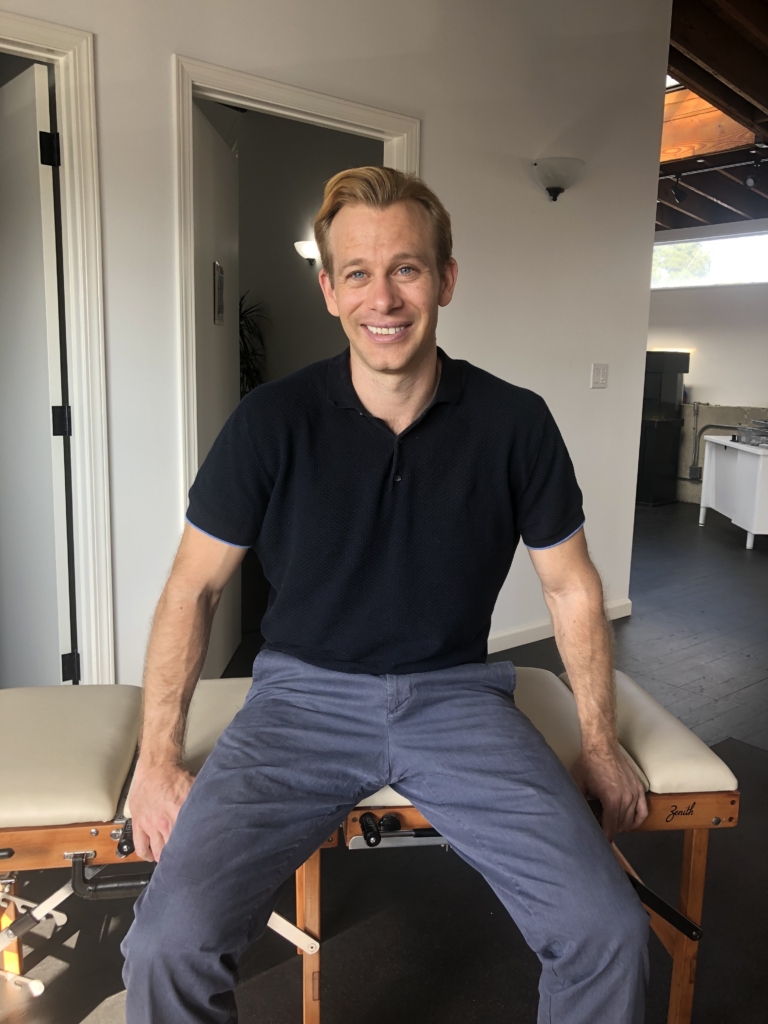Working from home brings all sorts of challenges. Poor ergonomics being one of these challenges. Some of the reasons for this is lack of a dedicated setup, not taking breaks, or even working from less than ideal areas of the house, such as your bed or couch.
Poor ergonomics can:
- increase risk of arthritis, injuries, and many types of musculoskeletal problems
- increase your cortisol levels which makes you feel stressed and weakens your immune system
- decrease your testosterone levels which affect your endurance, energy, focus, and concentration
How you work can significantly impact your level of neck and back pain. And it is luckily easy to make effective changes quickly.
Let’s dive into what I recommend you to focus on while working from home:
-
Alternate between standing and sitting:
- The most ideal position for working is a combination of sitting and standing. Getting a workstation that is adjustable is ideal and good for your posture. In addition, standing burns a lot of calories and will clear sugar from the blood much quicker. It also helps with insulin sensitivity and lower cancer risk and weight loss. Even if you can’t stand, the golden rule for when sitting is to keep hips and elbows at 90’, and a monitor that you can look at without moving your head forward. Alternate position every couple of hours but try to stand as much as possible.
-
Look straight at your computer
- Make sure your monitor is at eye height and your elbows at 90 degrees. If you don’t have access to a monitor you can do adjust your laptop height with a box or books underneath.
-
Take 2 minutes breaks every hour.
- Taking a break from work just 2 minutes an hour lowers stress and tension in your body (and is also a major contributing factor for cardiovascular disease) I always recommend either meditation or stretching. The meditation can be guided or just setting a timer and try to focus on deep breathing and literally thinking of nothing. It also helps to decrease tension in your body as you give your body a mental break. Stretching can be a variation of standing and sitting ones, but I recommend stretching your neck, arms and shoulders. My 3 favorite stretches are:
- 1) Hold hands together above the head with palms facing up. Push your arms up, stretch upward, and hold the pose for 30 seconds.
- 2) Slowly roll neck toward one side and then repeat on the other side. Do this three times in each direction.
- 3) While you are sitting, reach both hands behind your back and around your office chair. Then arch your back and move your chest forward. Hold each stretch for 30 seconds and do it 3 times.
- Taking a break from work just 2 minutes an hour lowers stress and tension in your body (and is also a major contributing factor for cardiovascular disease) I always recommend either meditation or stretching. The meditation can be guided or just setting a timer and try to focus on deep breathing and literally thinking of nothing. It also helps to decrease tension in your body as you give your body a mental break. Stretching can be a variation of standing and sitting ones, but I recommend stretching your neck, arms and shoulders. My 3 favorite stretches are:
So remember, alternate your position while working, look straight ahead and take breaks. Your body will thank you both in the short and long term. Let me know how it goes!
Dr. Sebastian Kverneland is the founder of the Scandinavian Health Institute in Los Angeles, California. Dr. Kverneland’s goal is to find the root cause of pain and he specializes in headaches, neck, back, and chronic pain. Kverneland holds a Doctorate in Chiropractic from Southern California University of Health Sciences and is in the process of being certified by the Institute of Functional Medicine. His work has been featured in publications such as New York Post, Martha Stewart, Yahoo, MSN, and Thrive Global.






 No products in the cart.
No products in the cart.